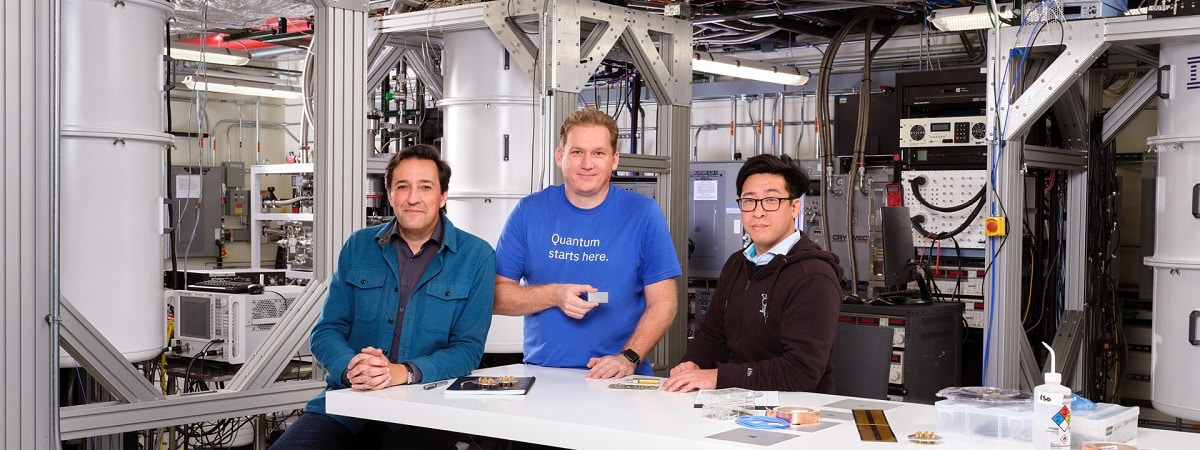
IBM Unveils Next-Generation Quantum 400 Qubit-Plus Processor and IBM Quantum System Two
During the Quantum Summit 2022, IBM unveiled details of its new Ospre quantum processoryy provided an update on its upcoming IBM Quantum System Two hardware.
IBM has announced the latest generation of its family of quantum processors. With more than three times the number of qubits of the Eagle processor from the previous generation, Osprey is the first to offer more than 400 qubits, signaling that the company is on track to release the world's first 1000-qubit processor next year. There is still a long way to go before the arrival of the fabulous 4.158-qubit system, scheduled for 2025.
Remember that IBM announced in early May that it planned to push its rising products and revised the 2020 roadmap with an even more ambitious goal: operating a 4000-qubit system by 2025.
“In 1969, humans overcame unprecedented technological hurdles to make history: we sent two of our own to the Moon and brought them back safely. Today's computers can accurately capture the smallest details of our universe, but they fall short,” says IBM.
Although the error rates of IBM qubits have been steadily improving, have not yet reached the point where Osprey's 433 qubits can be used in a single algorithm without a very high probability of error. For now, IBM insists that Osprey is an indication that the company can stick to its quantum computing roadmap and that the work needed to make it useful is underway.
With its 433 qubits, Osprey has the potential to perform complex quantum calculations far beyond the computational ability of any classical computer, Big Blue said, and represents another step toward its previously announced goal of providing a 4158-qubit system by 2025.
“The new Osprey processor brings us closer to the time when quantum computers will be used to solve previously insolvable problems,” said Dr. Darío Gil, senior vice president and chief research officer at IBM. Like last year's 127-qubit Eagle, the Osprey includes multi-level wiring to provide flexibility in signal routing and device design, while adding built-in filtering to reduce noise and improve stability, IBM said.
In addition, company seeks to address problem in quantum processors with new capabilities that allow users to employ error suppression as part of their Qiskit software development kit for quantum systems. This is currently a beta update to Qiskit Runtime, which allows the user to trade speed for reduced bugs through a simple option in the API, IBM said.
Qiskit also allows users to add error mitigation strategies. The various methods available have different cost/accuracy trade-offs. Therefore, IBM has indicated that these are added via a new option to Qiskit's primitives, called "resilience level", which allows users to choose the cost/accuracy trade-off that suits their task.
IBM said its Quantum System Two, the first step in its data center-like approach to quantum computers, should be available by the end of 2023. (Indeed, a video released by the company indicates it will introduce its first work at Quantum Summit next year).
According to IBM, Quantum System Two will form a basic element of his vision of the quantum supercomputer. It will scale using a modular architecture tied together by quantum communications to increase its computational capacity, as well as implement hybrid cloud middleware to integrate classical and quantum workflows.
Jay Gambetta, an IBMer and vice president of IBM Quantum, said the new brand is
“an important moment in the evolution of the global quantum computing industry. As we continue to scale up quantum systems and make them easier to use, we will continue to see the adoption and growth of the quantum industry,” he predicted.
Meanwhile, Fujitsu said it is working to offer customers a compute workload broker that will use AI to automatically select the most "optimal" resources for an application from a combination of quantum and compute-intensive technologies.
Fujitsu said it developed HPC/quantum hybrid computing technology to solve quantum chemistry problems while working on the technology. This technology is intended to serve as a precursor to the workload agent and enable high-precision, high-speed computations by combining HPC and quantum resources.
It is essentially a prototype workload broker, but designed for a single workload: material property analysis for drug discovery and new materials development.
Finally, if you are interested in knowing more about it, you can consult the details In the following link.
what great news! Every day closer to solving all the problems of hunger in the world, and inequality, even freedom of expression, in short, all the problems that are basically just one. Ahead!